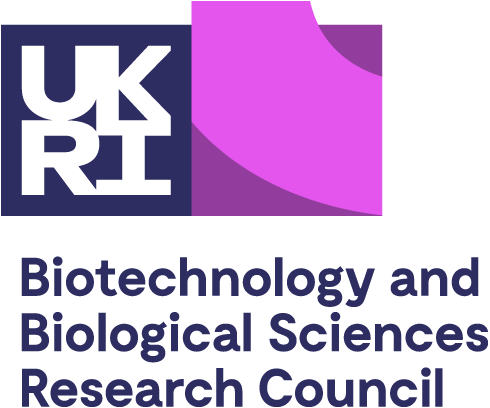Central Laser Facility
You can apply for instrument time to use the various laser and imaging systems relevant to bioscience at the Central Laser Facility at Harwell:
- Artemis
- OCTOPUS
- Ultra.
Find out more about the Central Laser Facility.
Neutrons
You can get beamtime through:
- ISIS Neutron and Muon Source – a free Science and Technology Facilities Council (STFC) facility at Rutherford Appleton Laboratory
- Institut Laue-Langevin (ILL).
Research Complex at Harwell
You can make use of the joint BBSRC, MRC, STFC, EPSRC, NERC and Diamond Light Source Research Complex at Harwell. The complex is a mix of research hubs, individual groups and facilities in the physical, life and laser sciences. You can apply to use the facilities if you’re a UK-based research team or Diamond and Rutherford Appleton Laboratory staff.
Find out more about the Research Complex at Harwell.
Synchrotron radiation
You can apply for beamtime at:
- Diamond Light Source, Harwell
- European Synchrotron Radiation Facility (ESRF) based in Grenoble, France
- other international synchrotron resources – you’ll need to explain why you need to use another facility in your funding application.
Find out how to apply for beamtime at the Diamond Light Source, Harwell.
Find out how to apply for beamtime at ESRF.
UK High-Field Solid-State Nuclear Magnetic Resonance Facility
You can apply for instrument time at the national high-field solid-state nuclear magnetic resonance facility located at Warwick University.
Find out more about the UK High-Field Solid-State Nuclear Magnetic Resonance Facility.
Bioinformatics and computation
You can access and analyse molecular data through:
- European Bioinformatics Institute – the world’s most comprehensive range of freely available and up-to-date molecular data resources
- Collaborative Computational Projects – provides CCP4 software for determination of macromolecular structures by X-ray crystallography.
BioLayout Express 3D
You can download BioLayout, an open-source visual analytics platform for the interpretation of large and complex biological datasets rendered as networks.
Biological resources
You can source biological resources from two centres.
Nottingham Arabidopsis Stock Centre
The Nottingham Arabidopsis Stock Centre provides seed and information to the International Arabidopsis Genome Programme and researchers. It also provides free access to:
- GARNet – a UK Arabidopsis functional genomics network
- UK CropNet – a crop bioinformatics network.
Roslin Institute Transmissible Spongiform Encephalopathy (TSE) resource Centre
TSE Resource Centre collects, stores, characterises, produces and distributes reagents needed for TSE research.
Data sharing and data resources
You can use the following resources when planning your data sharing strategy:
- European Nucleotide Archive – Europe’s primary nucleotide sequence resource (also known as the EMBL Nucleotide Sequence Database)
- FlyBase – database of the Drosophila genome
- FAIRsharing – repository and community of data-sharing statements and standards in genomics and postgenomics
- UniProt – complete annotated protein sequence database
- IntAct Molecular Interaction Database – protein interaction database and analysis system
- Expert Protein Analysis System(Expasy) – a proteomics server of the Swiss Institute of Bioinformatics for analysis of protein sequences and structures and 2-D PAGE
- Protein Data Bank in Europe – provides tools and resources for studying the structures of biological macromolecules and their relationships to sequence, function and disease
- ArrayExpress – gene expression data
- NCBI Geo – online database for curated gene expression data
- WormBase – the central data repository for information about Caenorhabditis elegans and related nematodes
- ComBase – database for the growth kinetics of food-borne pathogens
- BioGRID – database and biomedical interaction repository for biological interactions.
Genetics and genomics
You can use the following genetic and genomics resources:
- functional genomics for farm and domestic animals through the ARK-Genomics Centre for Comparative and Functional Genomics based at The Roslin Institute in Scotland
- FlyAtlas – online atlas of gene expression in Drosophila
- RevGenUK – functional genetics research and reverse genetics
- miRBase – annotated database of published miRNA sequences.
High performance computing
You can access high performance computing through the following:
- ARCHER2 – the UK National Supercomputing Service
- Partnership for Advanced Computing in Europe (PRACE).
Imaging
You can use the following imaging resources:
- Open Microscopy Environment Remote Objects (OMERO) – client-server software for the visualisation, management and analysis of biological microscope images
- Electron Microscopy Data Bank (EMDB) – for electron microscopy data produced by a variety of techniques including single-particle analysis, electron tomography and electron (2D) crystallography.
Molecular biology
You can use the following molecular biology resources:
- European Molecular Biology Open Software Suite – a free open-source software analysis package specially developed for the needs of the molecular biology (for example EMBnet) user community
- Chemical Entities of Biological Interest (ChEBI) – a dictionary of molecular entities focused on small chemical compounds.
Protein structure and function
You can use the following protein structure and function resources:
- DichroWeb – online analysis for protein circular dichroism spectra
- SUPERFAMILY – a database of structural and functional annotation for proteins and genomes
- Phyre2 – a protein modelling resource for the prediction of protein structure
- PSIPRED – a web-based workbench for predicting protein structure and function
- Jalview – a free Java program for multiple amino-acid sequence alignment editing.
Systems approaches to biology
You can use the following resources to support a systems approach to biology:
- PlaSMo Plant Systems Biology Modelling Portal – portal giving access to crop mathematical models in a standardised format
- Systems Training in Maths, Informatics and Computational Biology (SysMIC) – an online course in systems biology aimed at researchers in the biological sciences.


